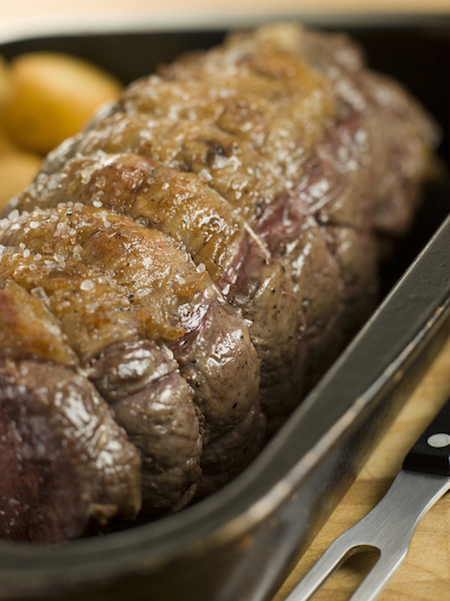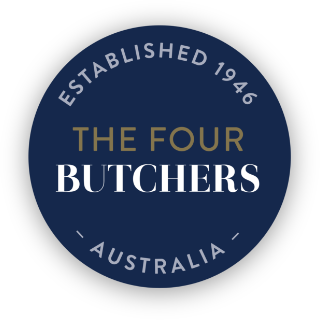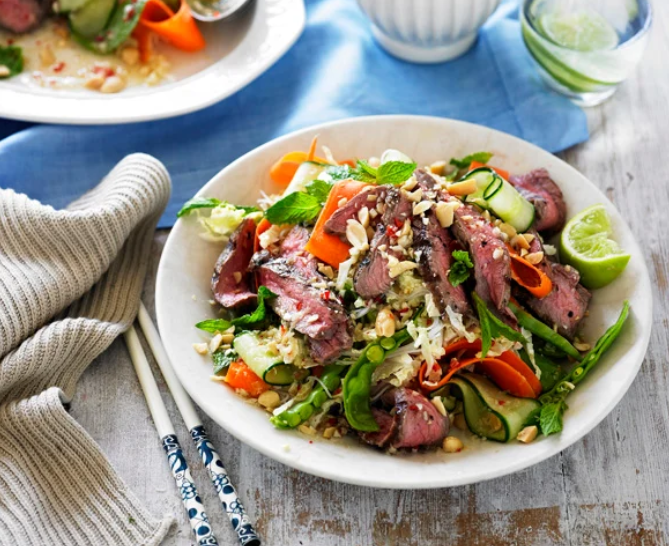
With Thanksgiving just around the corner, we bet you’re preparing your Thanksgiving festivities and most importantly, your Thanksgiving meal. Roasts hold a special significance at family dinners – they are traditional, flavorsome, festive and sure to please even the toughest kitchen critics. If you plan to make roast beef this Thanksgiving, this blog post is for you.
Choosing your beef
The best cuts of beef for roasting are the eye fillet, rib eye (on the bone or boneless fillet), sirloin or rump. When choosing your beef cut in store, look out for:
- A moderate covering of fat on cuts such as sirloin or rump – which will add delicious flavor and prevent the meat from drying out during cooking.
- Marbling – i.e. thin streaks of fat throughout the meat, which adds to the delicious flavor and juiciness.
- Bright, cherry red colouring.
- When possible, buy beef graded under the Meat Standards Australia (MSA) grading system to guarantee an outstanding eating quality.
How much should you buy?
A 3.3 pounds (1.5kg) roast should feed about 6 people. We reckon it’s okay to overestimate a little though… because leftover roast beef makes for some delicious sandwiches!
Cooking your beef
Always cook beef from room temperature (so, take it out of the fridge about 20 minutes before cooking), as this ensures even cooking. Here are 4 basic steps for cooking all roasts:
Step 1: Preheat your oven to 428ºF. Brush the meat lightly with oil. Season with salt, pepper and any additional flavorings.
Step 2: Place the roast on a rack or trivet in a roasting dish, or place it on top of vegetables. Raising the roast allows the heat to circulate and therefore brown the roast evenly.
Step 3: Different cuts require different cooking times. General cooking guidelines: Start the beef off in a very hot oven (428ºF) for 30 minutes, then lower the temperature to 374ºF for the remaining cooking time. Estimated cooking times are:
- Rare – 11 mins per 16 ounces
- Medium – 14 mins per 16 ounces
- Well done – 16 mins per 16 ounces
Please note, these cooking times are based on a normal convection oven and are just estimates.
For ease and accuracy of cooking, we recommend that you use a meat thermometer. If you’re using a thermometer (which you need to stick into the thickest part of the roast), remove the meat when it is just shy of these temperatures:
- 140°F – rare
- 149-158°F – medium
- 167°F – well done
Step 4: Remove the roast from the oven once it is cooked to your desired doneness. Transfer to a plate, cover loosely with foil and rest for 10-20 minutes before carving. Resting is an important step, because it allows the meat juices to redistribute and the muscle fibres (which have tightened up during cooking) to relax. When you’re ready to carve the meat, slice it against the grain (i.e. across, not in line with, the direction of the muscle fibres) to ensure tenderness.
And that’s it! All that’s left to do is enjoy!






 Return
Return





